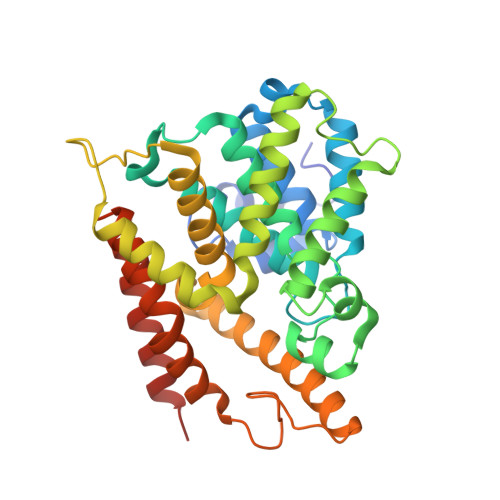Molecular Bases of PDE4D Inhibition by Memory-Enhancing GEBR Library Compounds.
Prosdocimi, T., Mollica, L., Donini, S., Semrau, M.S., Lucarelli, A.P., Aiolfi, E., Cavalli, A., Storici, P., Alfei, S., Brullo, C., Bruno, O., Parisini, E.(2018) Biochemistry 57: 2876-2888
- PubMed: 29652483
- DOI: https://doi.org/10.1021/acs.biochem.8b00288
- Primary Citation of Related Structures:
6F6U, 6F8R, 6F8T, 6F8U, 6F8V, 6F8W, 6F8X, 6FDC - PubMed Abstract:
Selected members of the large rolipram-related GEBR family of type 4 phosphodiesterase (PDE4) inhibitors have been shown to facilitate long-term potentiation and to improve memory functions without causing emetic-like behavior in rodents. Despite their micromolar-range binding affinities and their promising pharmacological and toxicological profiles, few if any structure-activity relationship studies have been performed to elucidate the molecular bases of their action. Here, we report the crystal structure of a number of GEBR library compounds in complex with the catalytic domain of PDE4D as well as their inhibitory profiles for both the long PDE4D3 isoform and the catalytic domain alone. Furthermore, we assessed the stability of the observed ligand conformations in the context of the intact enzyme using molecular dynamics simulations. The longer and more flexible ligands appear to be capable of forming contacts with the regulatory portion of the enzyme, thus possibly allowing some degree of selectivity between the different PDE4 isoforms.
Organizational Affiliation:
Center for Nano Science and Technology @ PoliMi , Istituto Italiano di Tecnologia , via Giovanni Pascoli 70/3 , 20133 Milano , Italy.



















